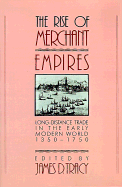Book contents
- Frontmatter
- Contents
- Preface
- Maps
- Introduction
- 1 Structural changes in European long-distance trade, and particularly in the re-export trade from south to north, 1350–1750
- 2 The growth and composition of trade in the Iberian empires, 1450–1750
- 3 The growth and composition of the long-distance trade of England and the Dutch Republic before 1750
- 4 France, the Antilles, and Europe in the seventeenth and eighteenth centuries: renewals of foreign trade
- 5 Productivity, profitability, and costs of private and corporate Dutch ship owning in the seventeenth and eighteenth centuries
- 6 The Dutch and English East India companies compared: evidence from the stock and foreign exchange markets
- 7 World bullion flows, 1450–1800
- 8 Merchant communities, 1350–1750
- 9 Economic aspects of the eighteenth-century Atlantic slave trade
- 10 Marginalization, stagnation, and growth: the trans-Saharan caravan trade in the era of European expansion, 1500–1900
- 11 The “decline” of the central Asian caravan trade
- 12 Merchant communities in precolonial India
- 13 Merchants without empire: the Hokkien sojourning communities
- Index
12 - Merchant communities in precolonial India
Published online by Cambridge University Press: 01 June 2011
- Frontmatter
- Contents
- Preface
- Maps
- Introduction
- 1 Structural changes in European long-distance trade, and particularly in the re-export trade from south to north, 1350–1750
- 2 The growth and composition of trade in the Iberian empires, 1450–1750
- 3 The growth and composition of the long-distance trade of England and the Dutch Republic before 1750
- 4 France, the Antilles, and Europe in the seventeenth and eighteenth centuries: renewals of foreign trade
- 5 Productivity, profitability, and costs of private and corporate Dutch ship owning in the seventeenth and eighteenth centuries
- 6 The Dutch and English East India companies compared: evidence from the stock and foreign exchange markets
- 7 World bullion flows, 1450–1800
- 8 Merchant communities, 1350–1750
- 9 Economic aspects of the eighteenth-century Atlantic slave trade
- 10 Marginalization, stagnation, and growth: the trans-Saharan caravan trade in the era of European expansion, 1500–1900
- 11 The “decline” of the central Asian caravan trade
- 12 Merchant communities in precolonial India
- 13 Merchants without empire: the Hokkien sojourning communities
- Index
Summary
If it were possible to have statistics of the volume of internal and external commerce around the year 1600 for different regions of the globe, it is fairly certain that India, with an estimated population of from 125 to 150 million, would at least have claimed a share proportionate to its population. The land-tax accounted for the larger portion of the surplus in India, and in most areas taxes were collected in money. This alone generated extensive trade in agricultural produce. The ruling classes were largely town-based, and an urban economy flourished, with craft production for both local and distant markets. India was undoubtedly the greatest cotton-textile producer of the world, and the finer qualities of cotton cloth sustained brisk long-distance commerce. The country exported calicoes, indigo, pepper, silk, and numerous other commodities over sea and over land, in return for which it absorbed large quantities of silver. The coinage of the Mughal Empire, issued from numerous mints all over India, was of wonderful fineness and uniformity.
These facts should be sufficient to persuade us of the importance of studying how commerce in India was conducted just at the time that the merchant empires of western Europe had begun their progress toward a worldwide hegemony. The present effort focuses on the merchants and selects two major mercantile communities, the Banjāras (long-distance transporters) and Banyas (village and town merchants), for description. The sketches of the two communities are followed by a discussion of the forms of mercantile organization and commercial and financial techniques of the Banyas.
- Type
- Chapter
- Information
- The Rise of Merchant EmpiresLong Distance Trade in the Early Modern World 1350–1750, pp. 371 - 399Publisher: Cambridge University PressPrint publication year: 1990
- 10
- Cited by



